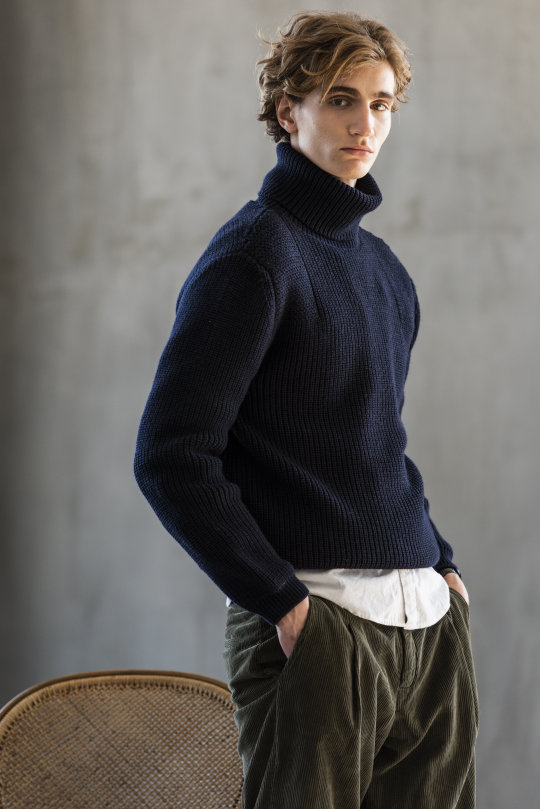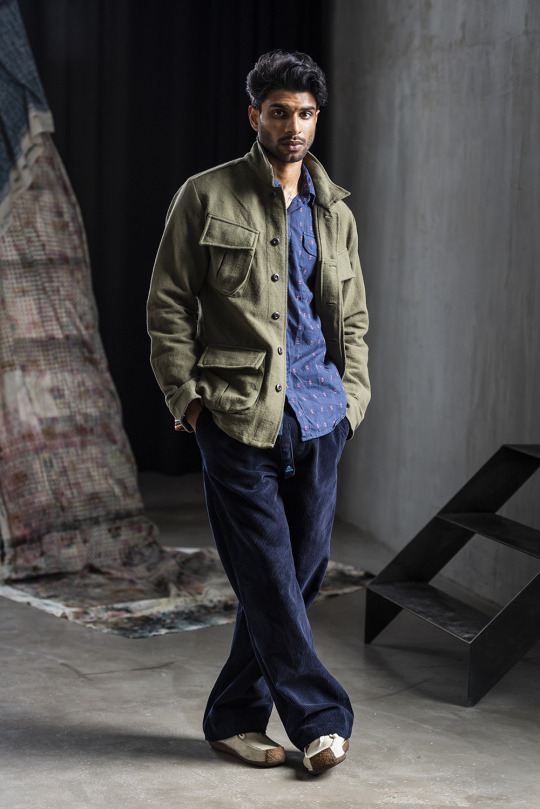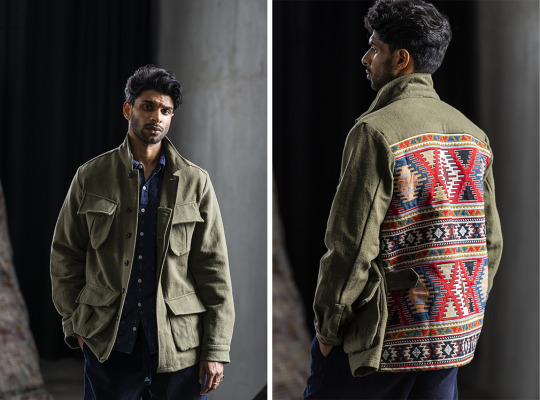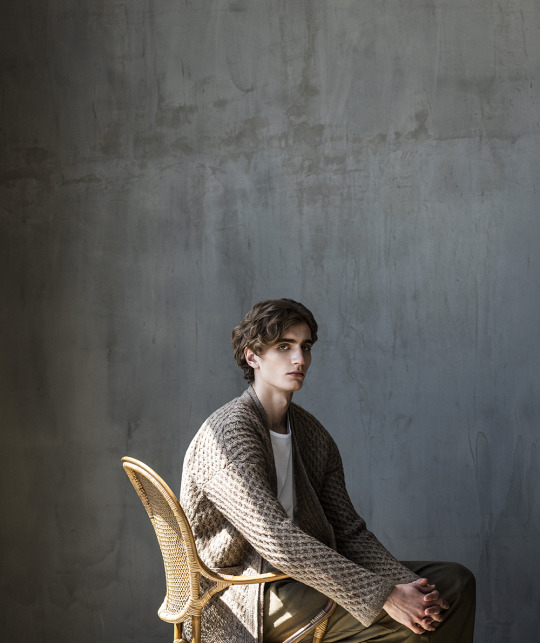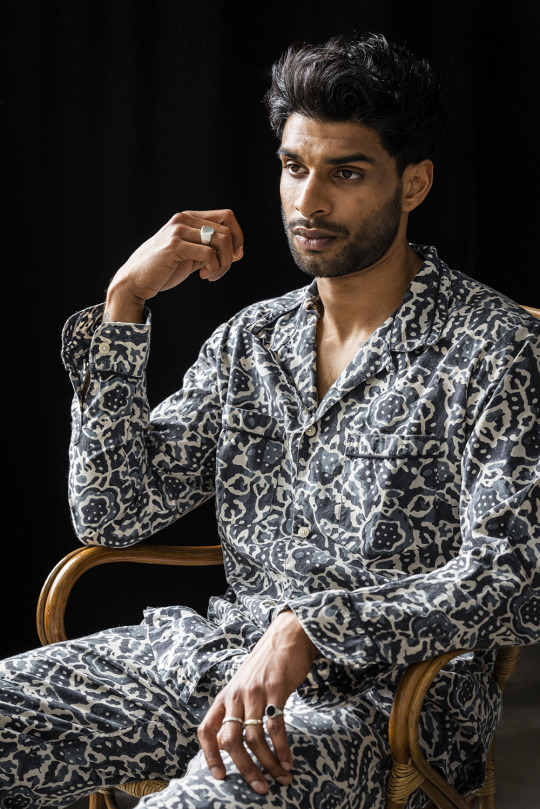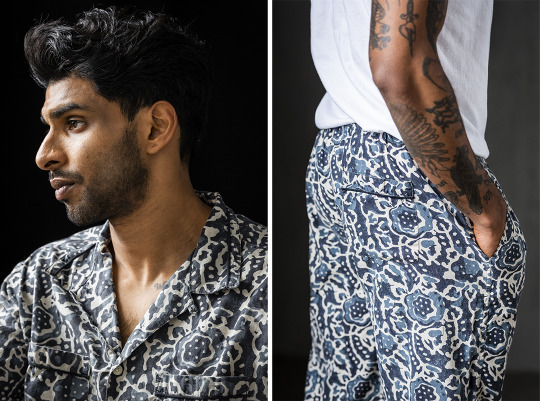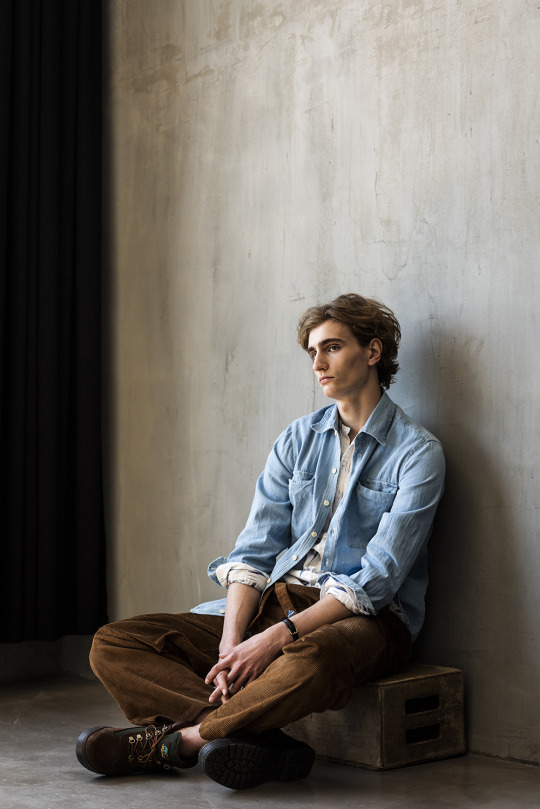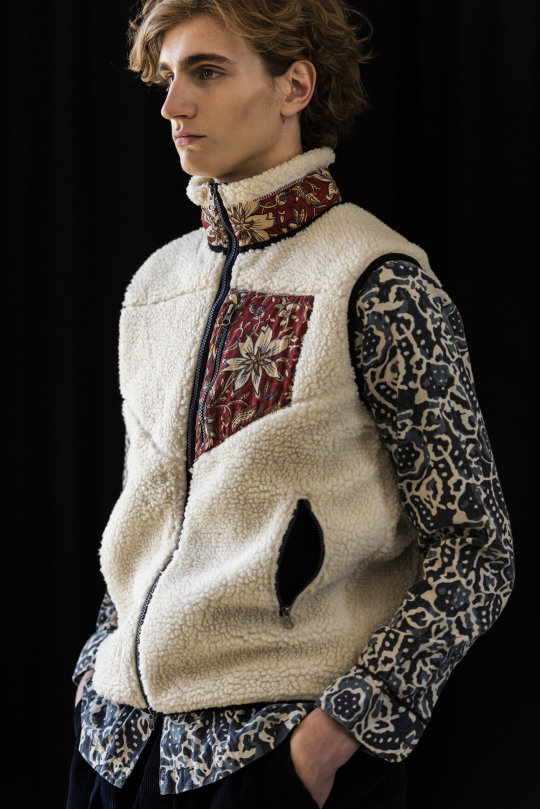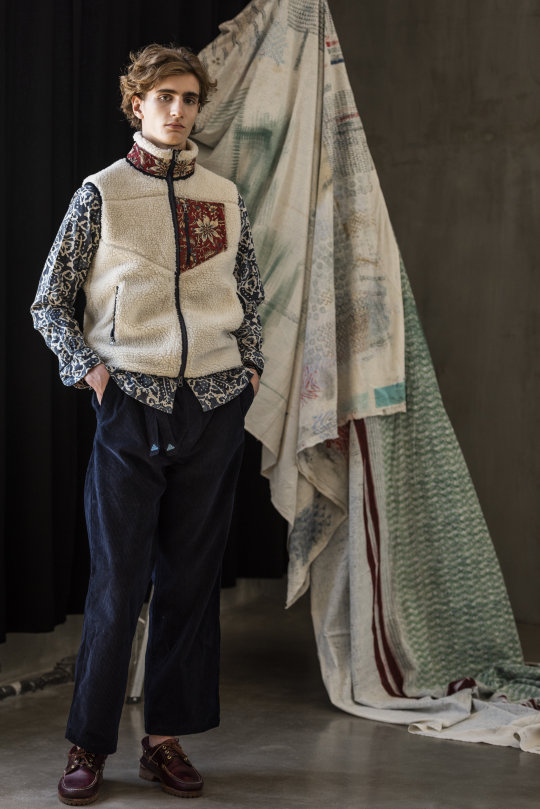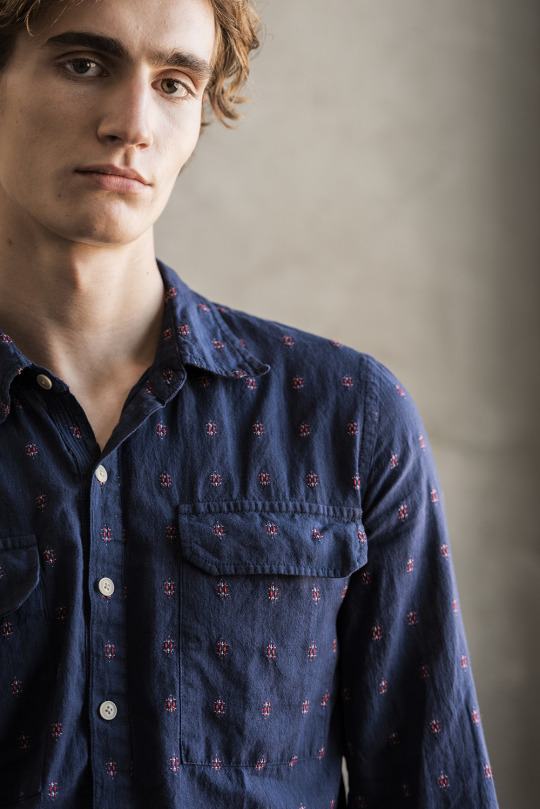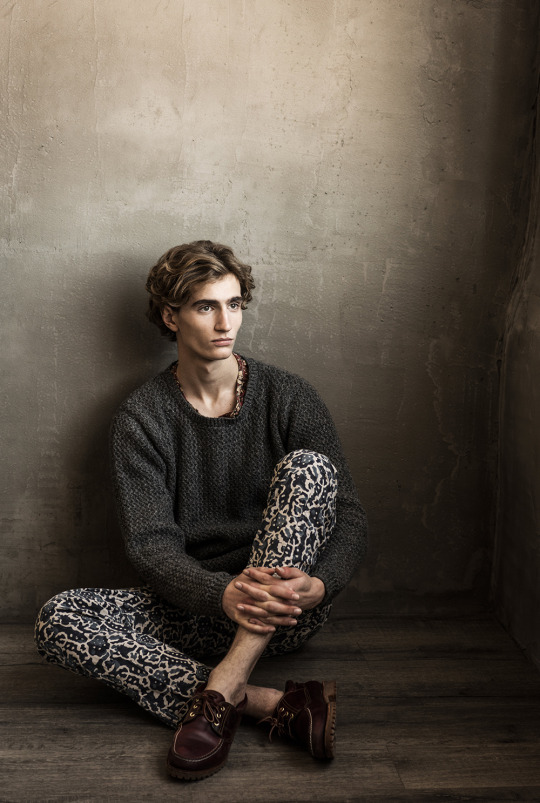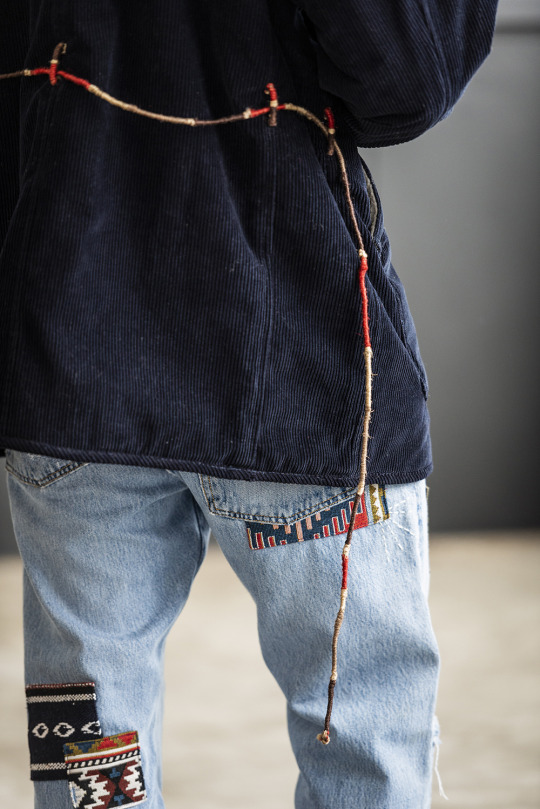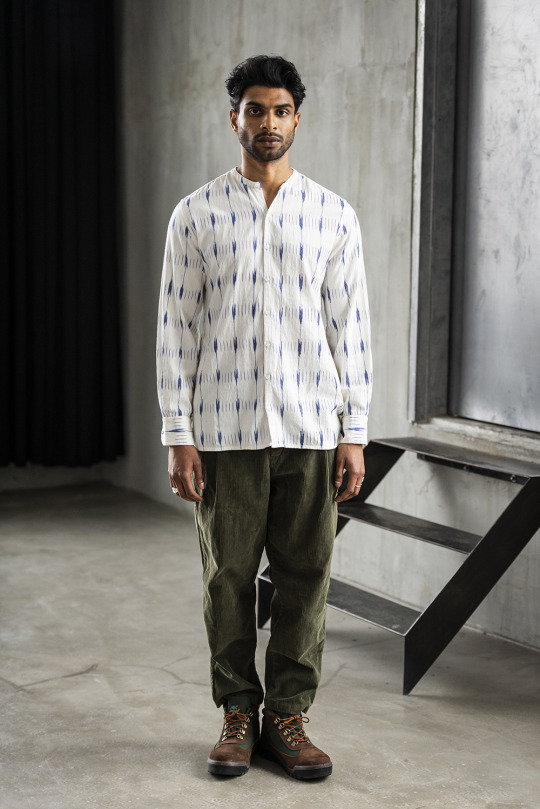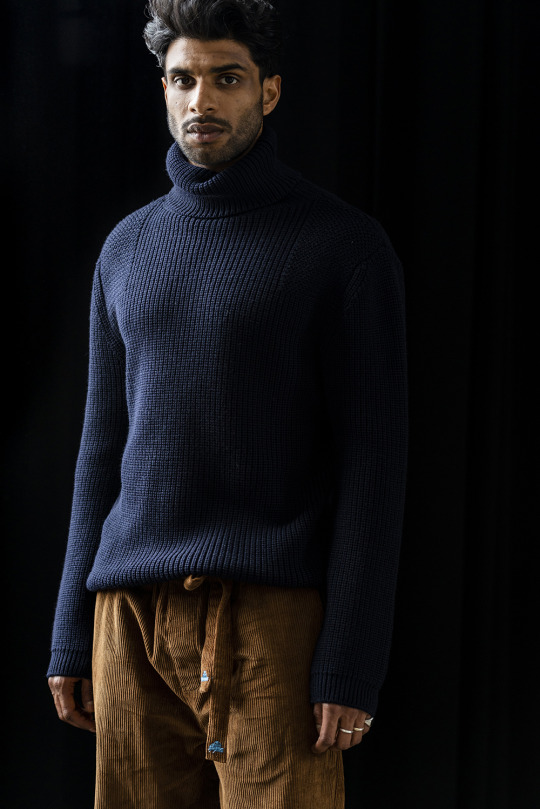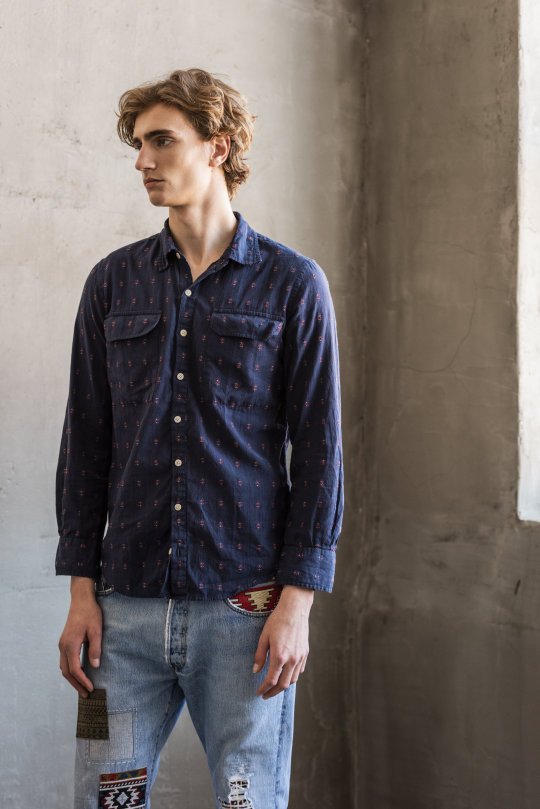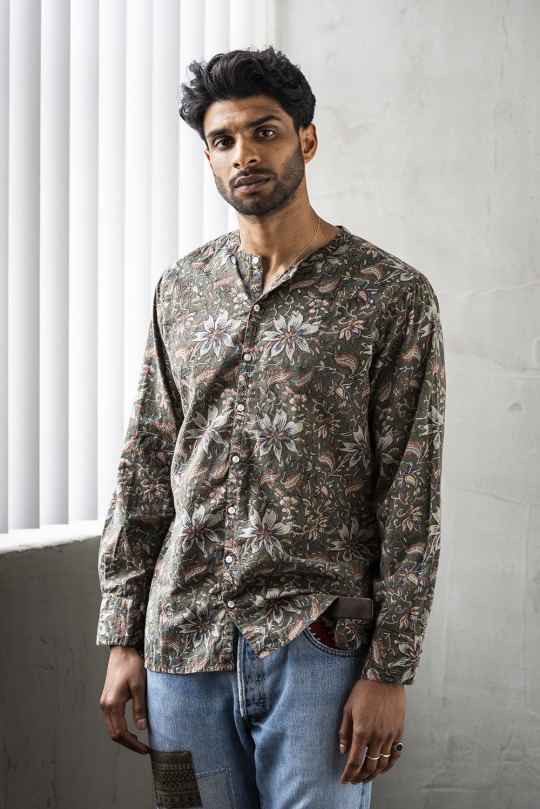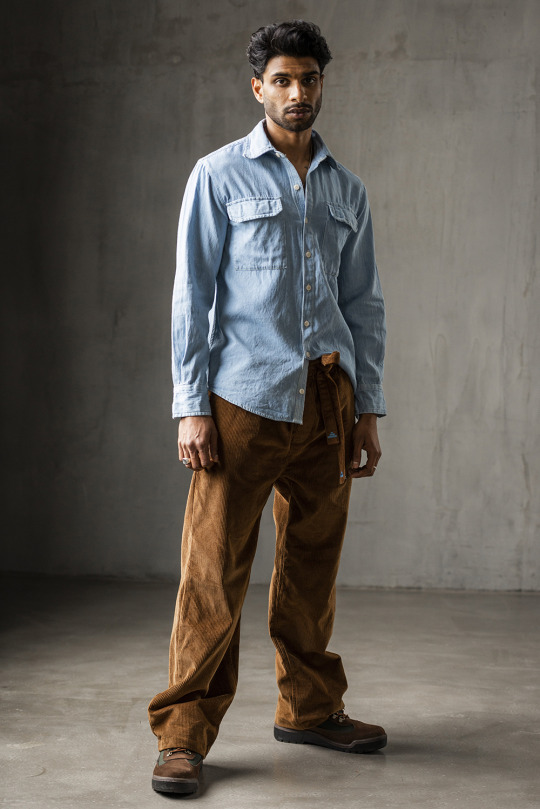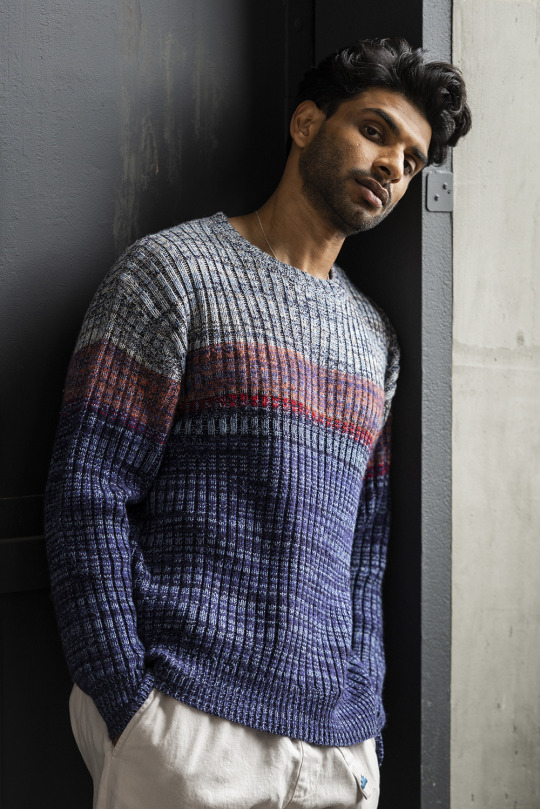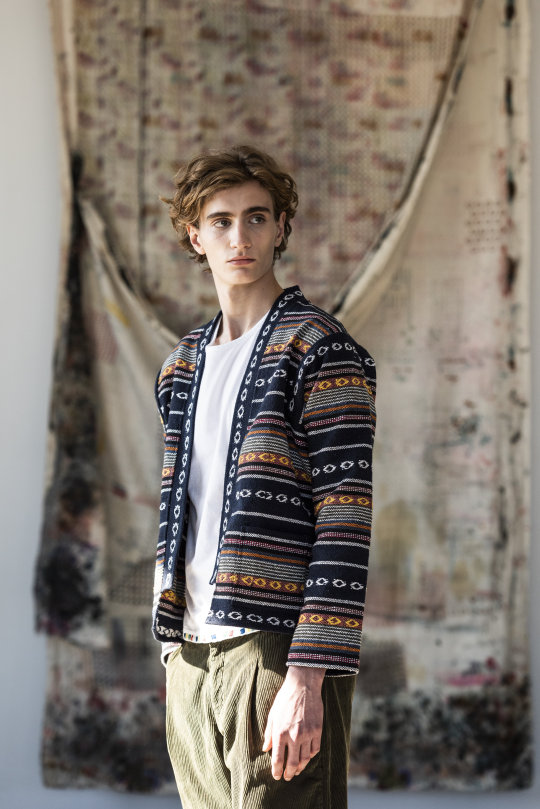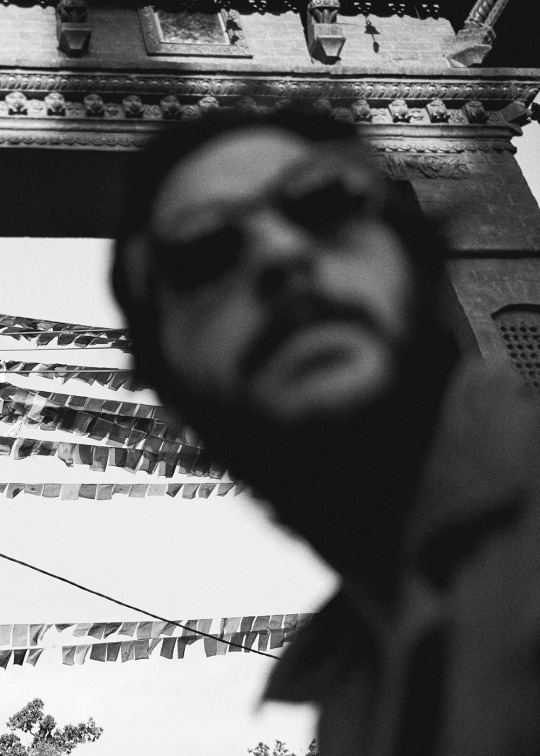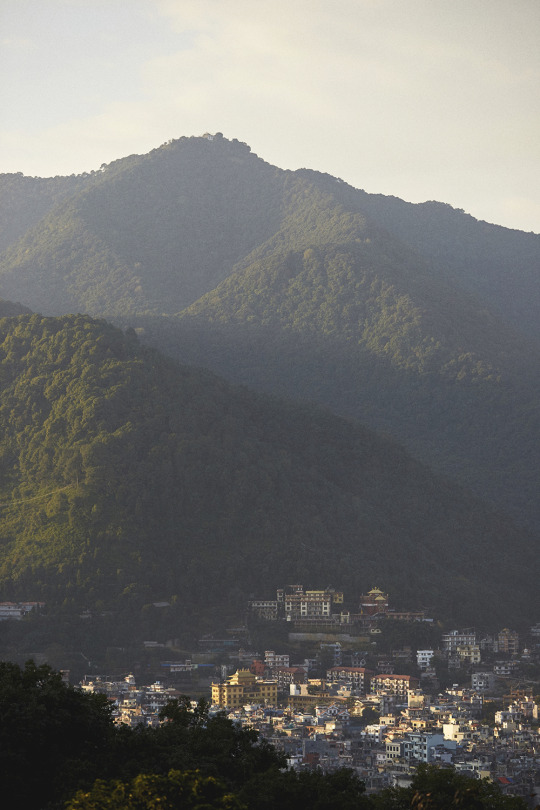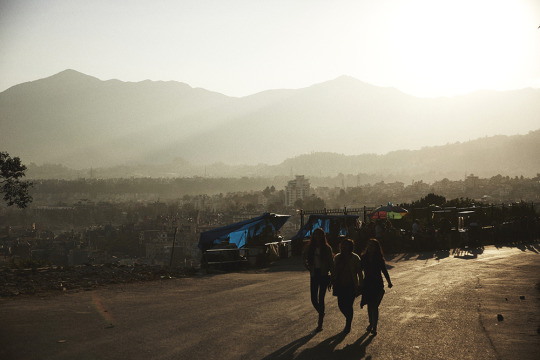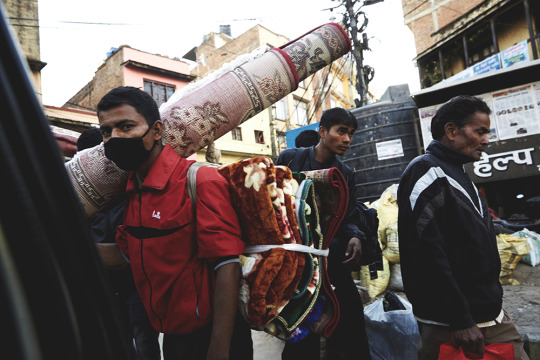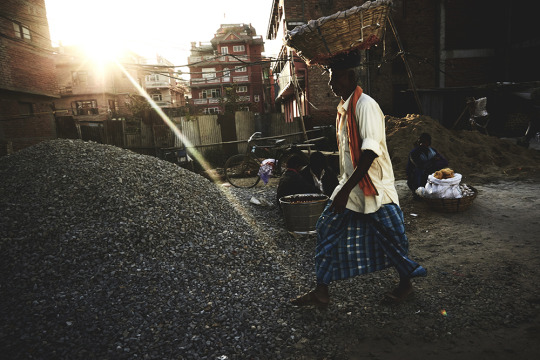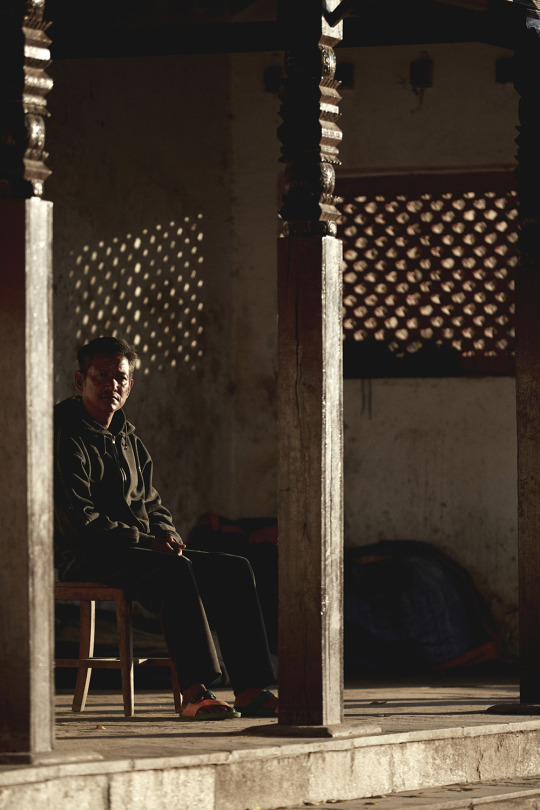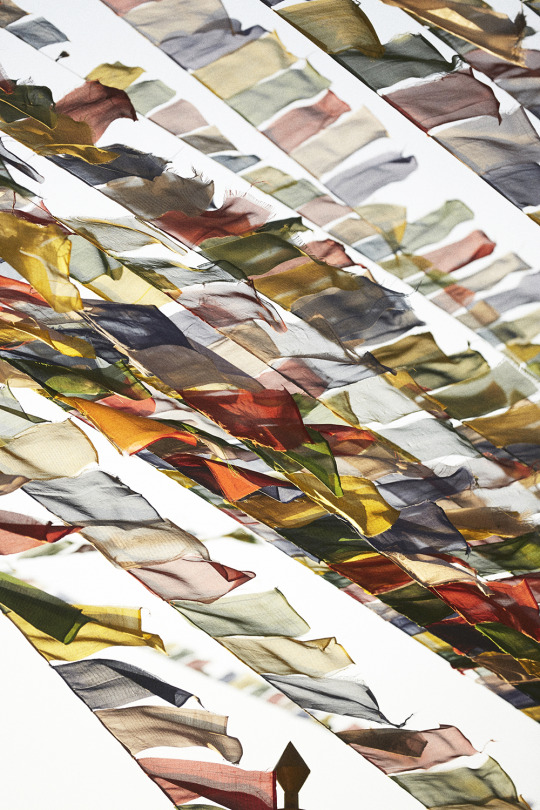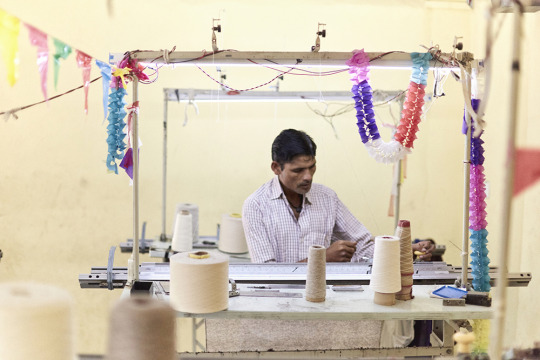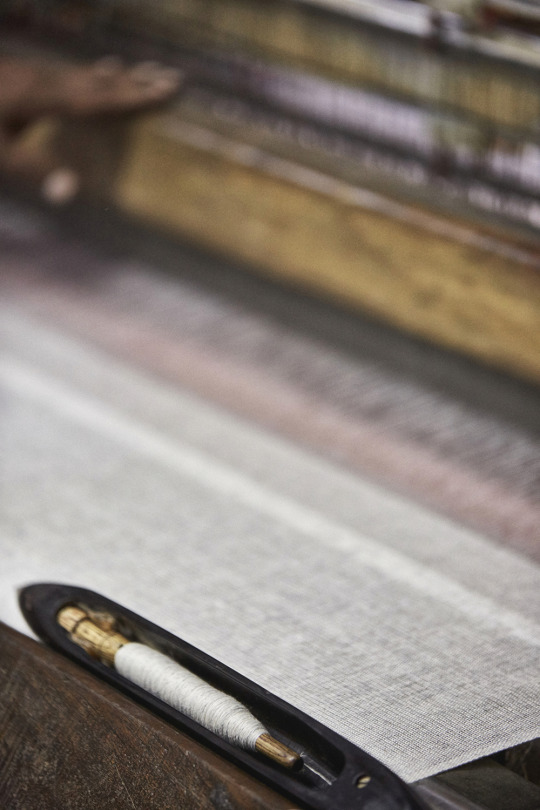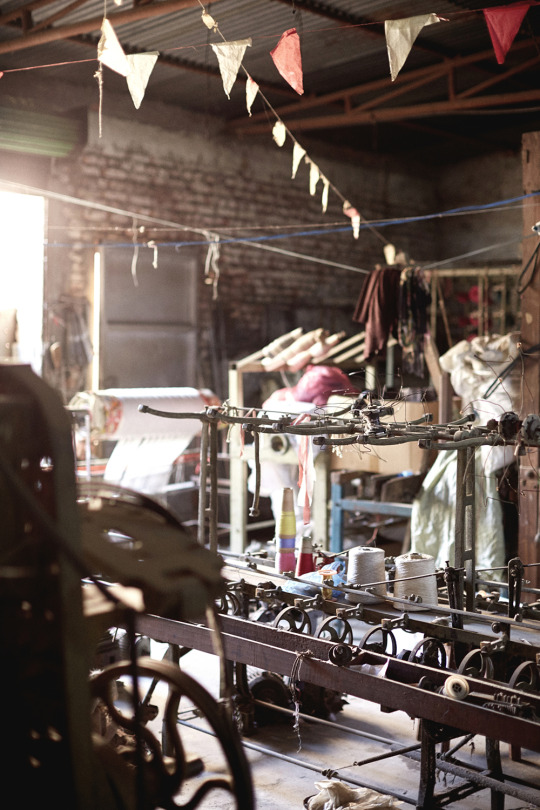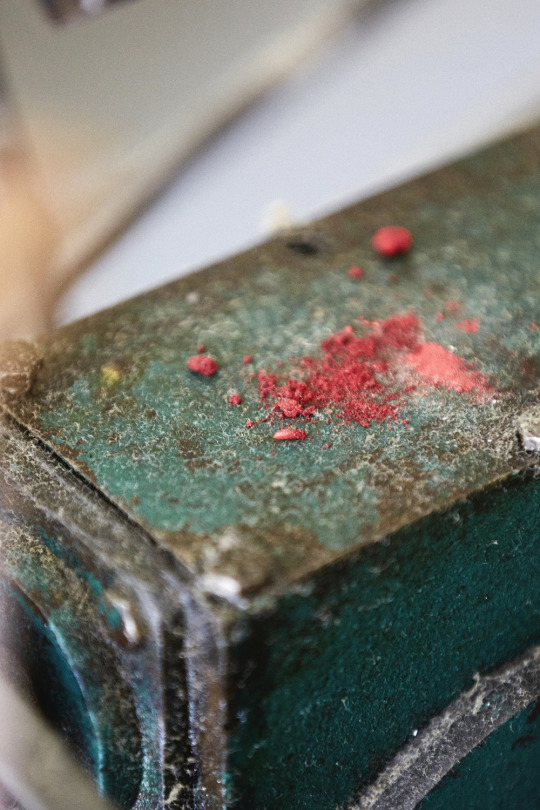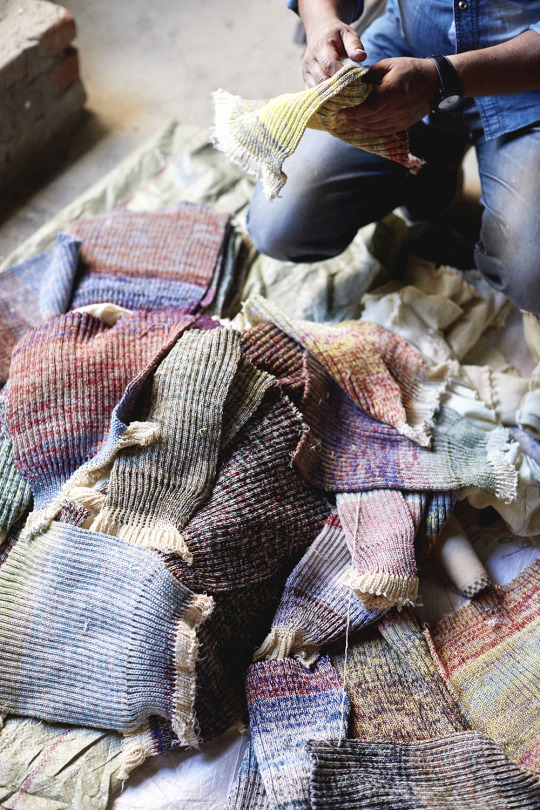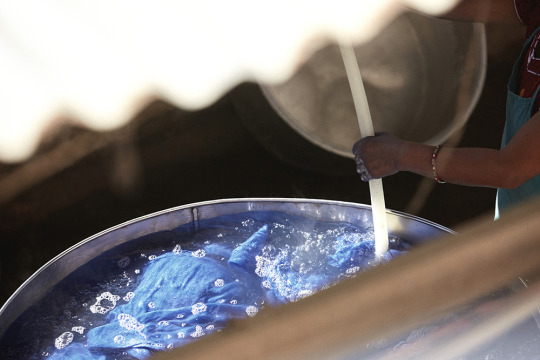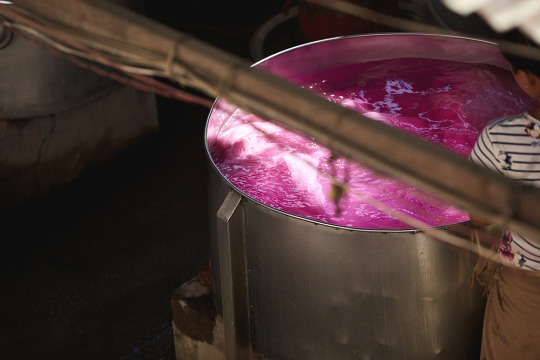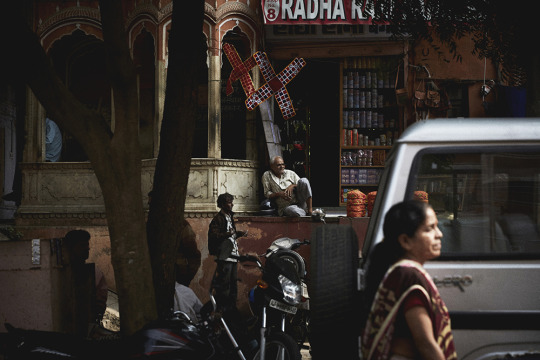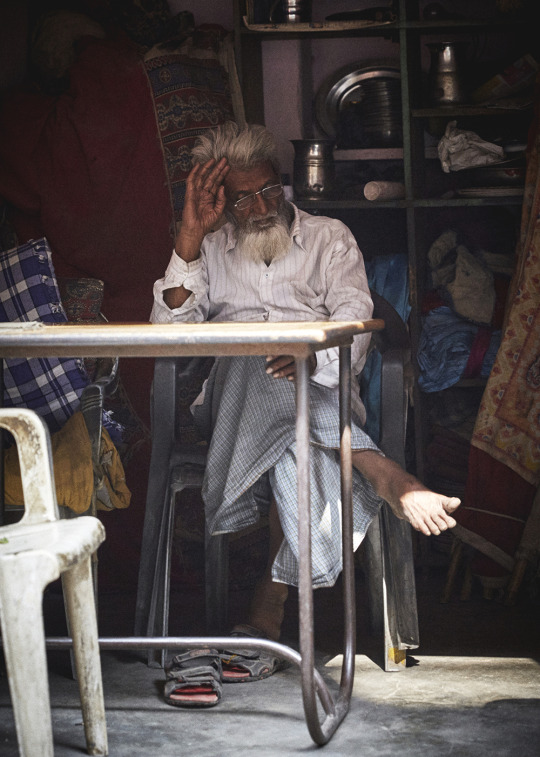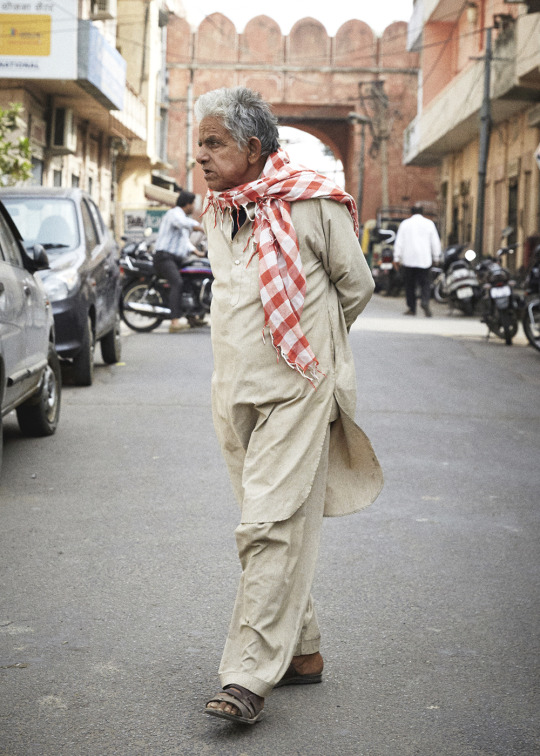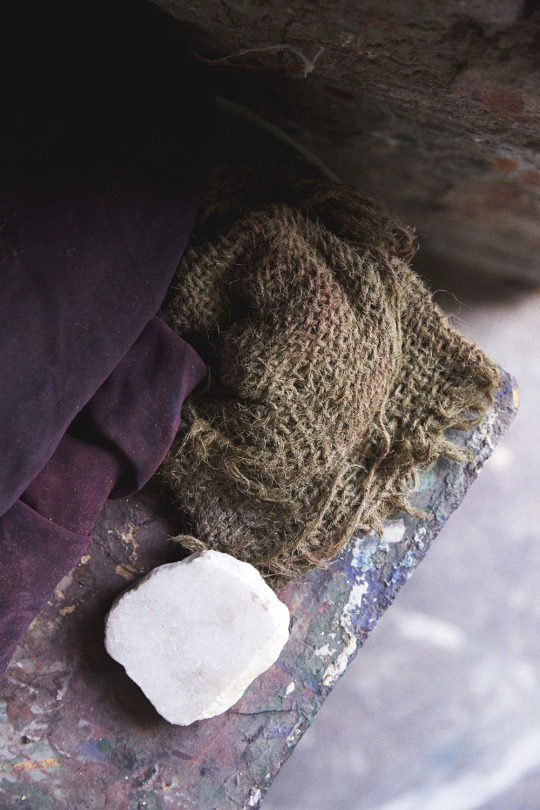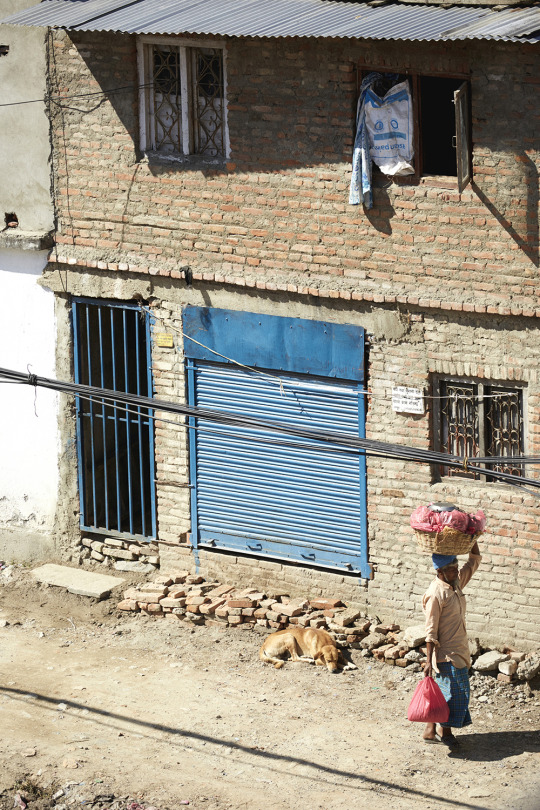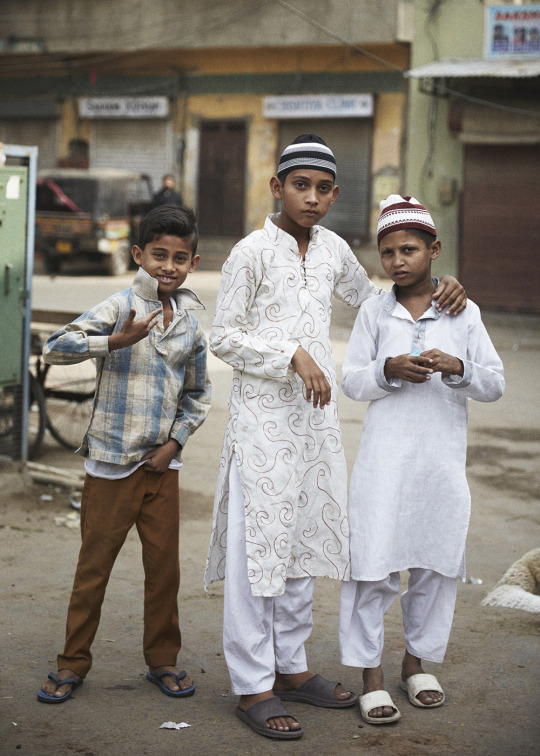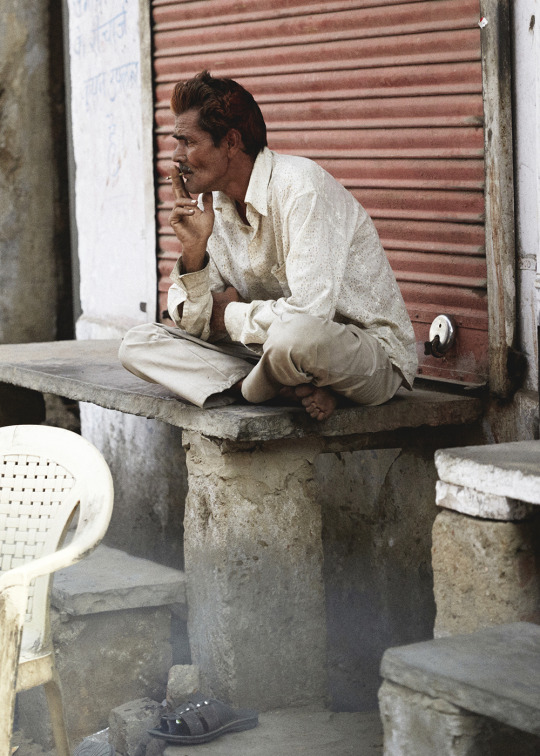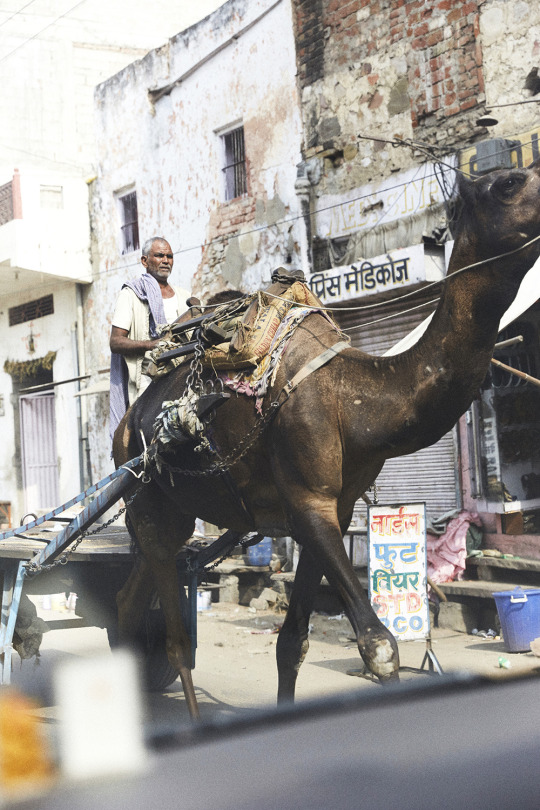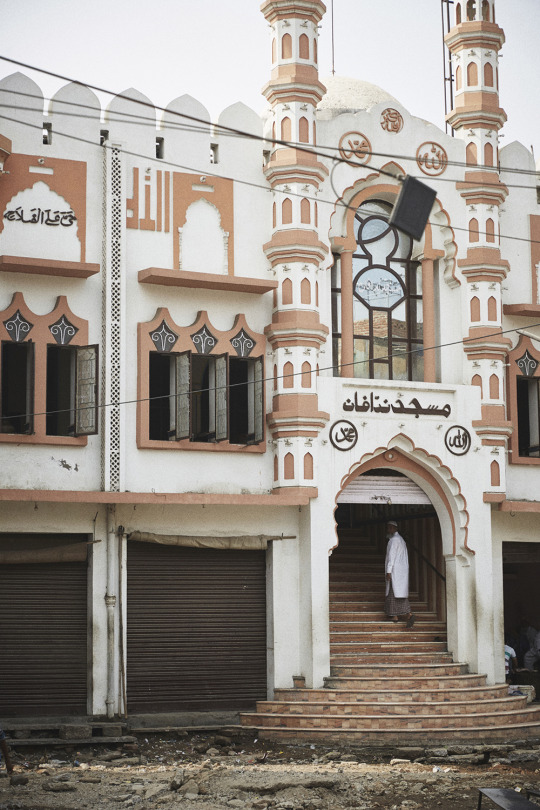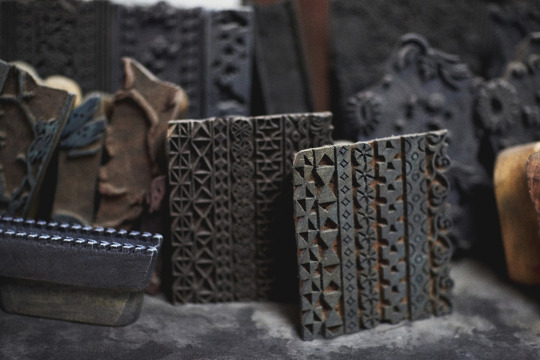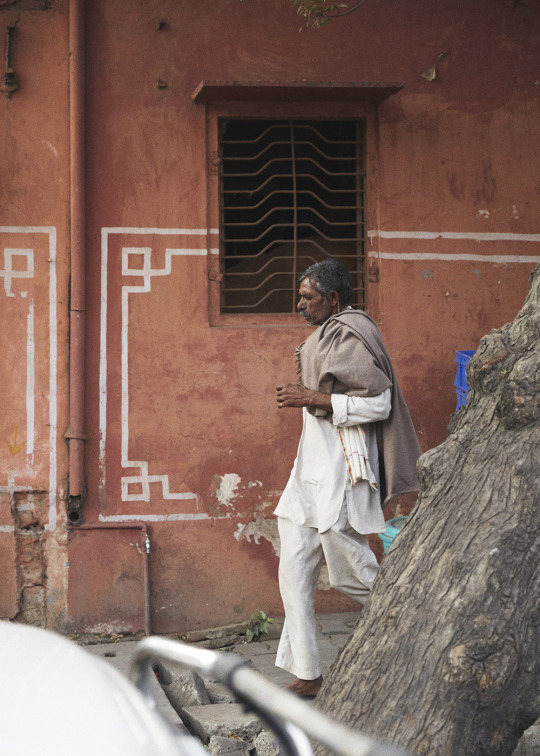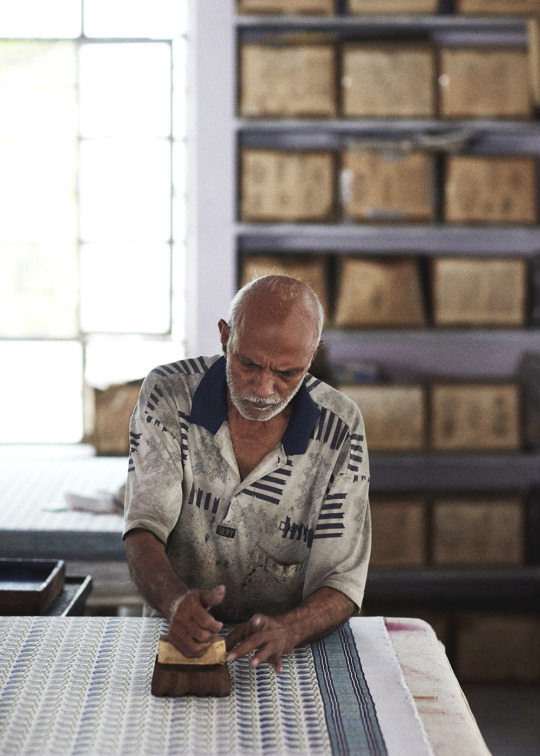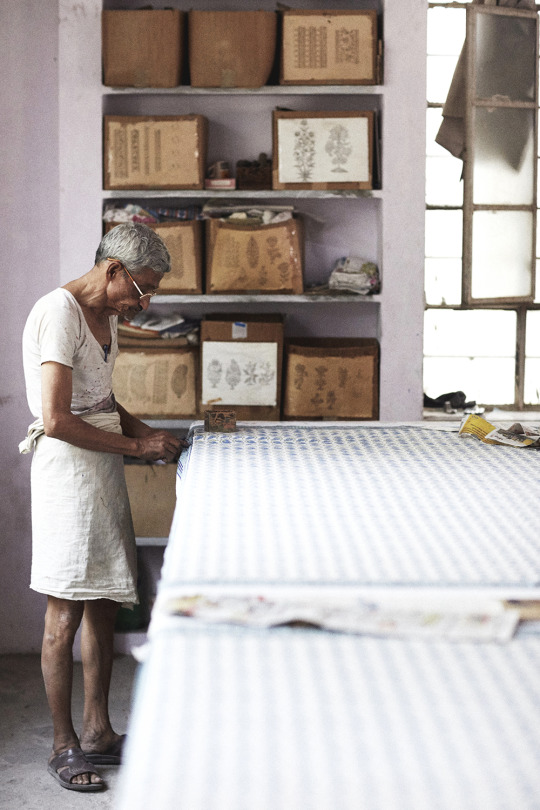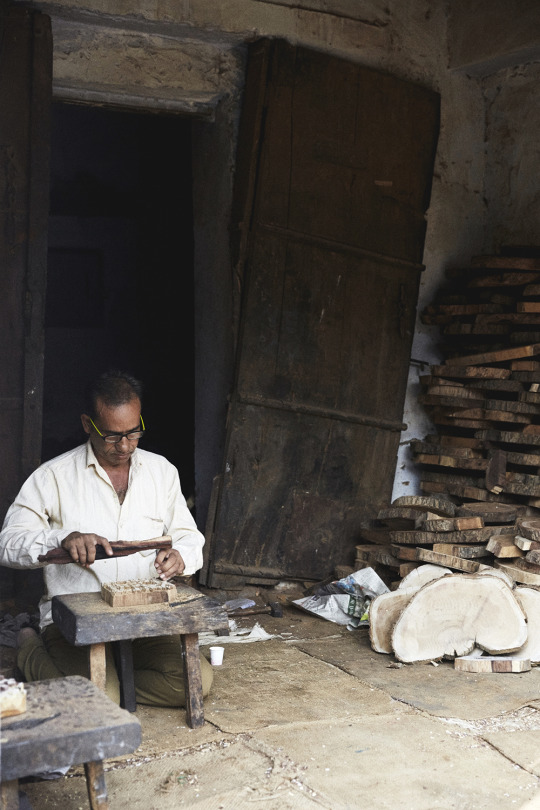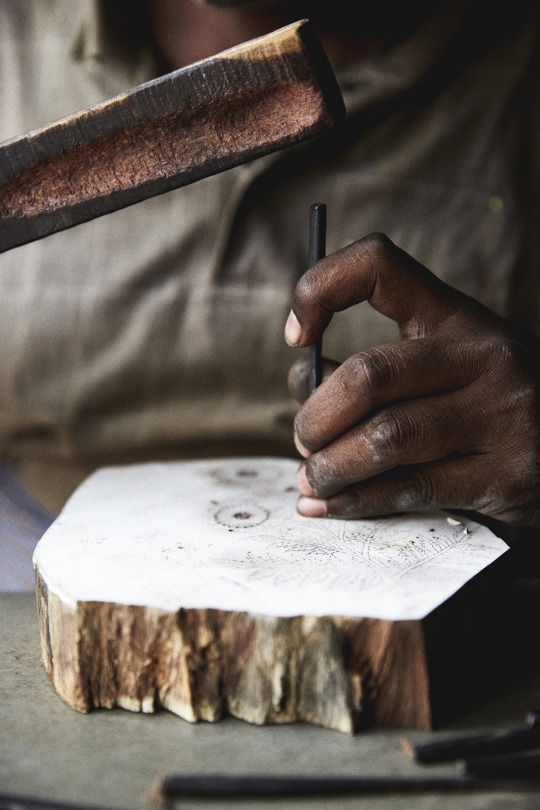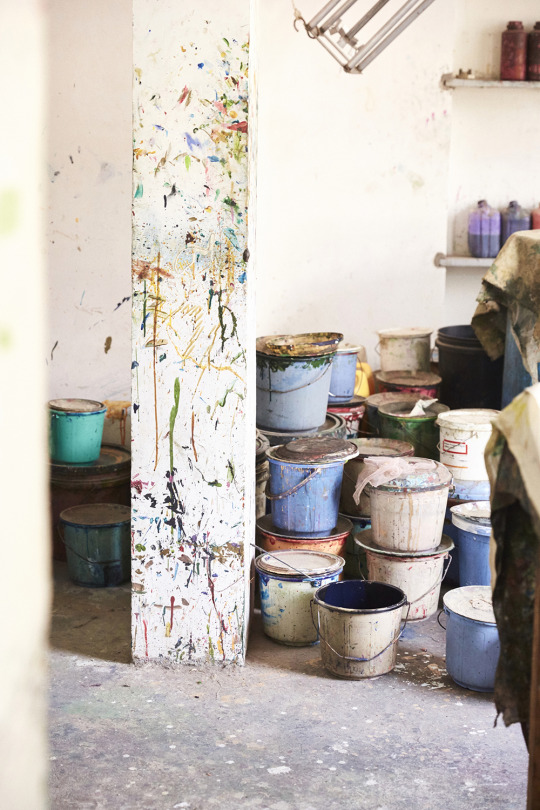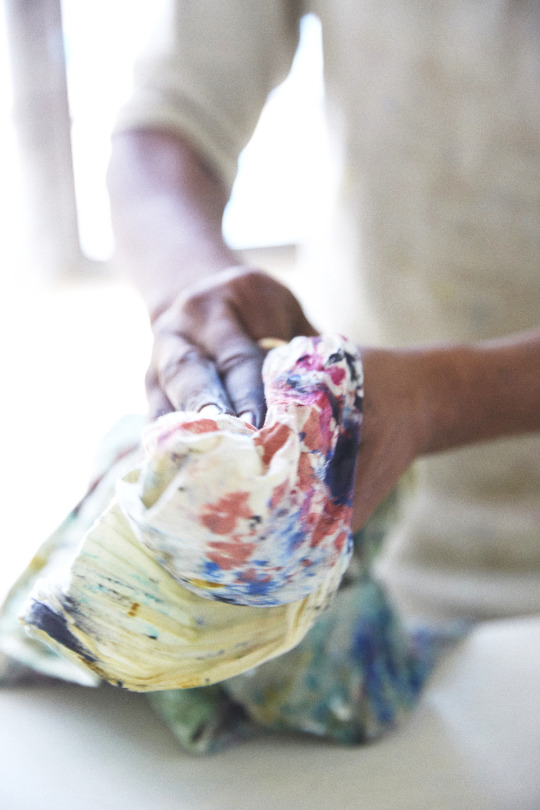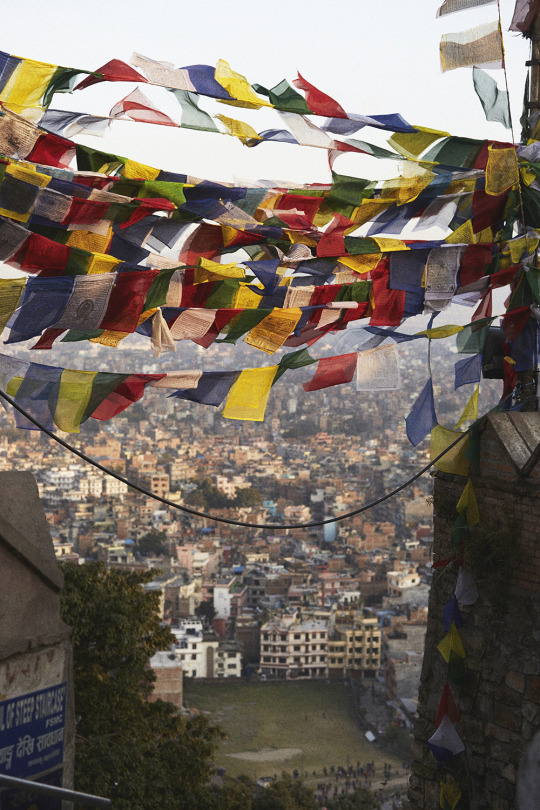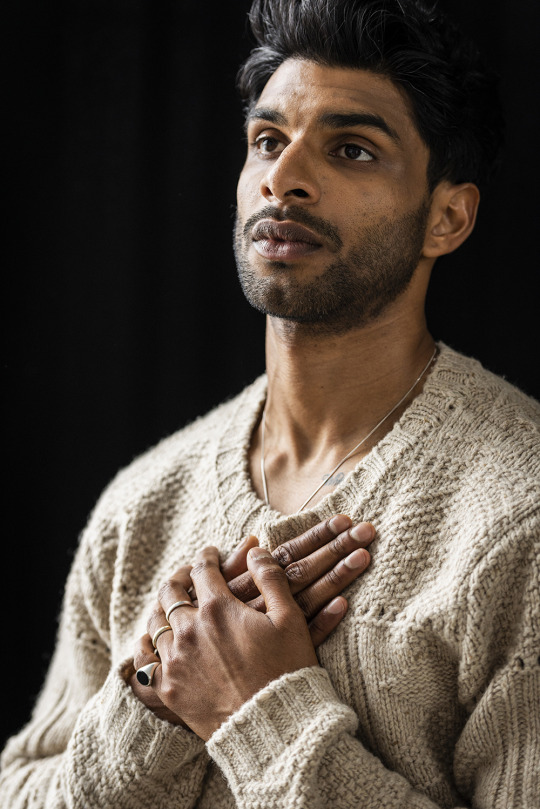
A couple of years ago, former Eidos designer Antonio Ciongoli and Stoffa founder Agyesh Madan headed to India to work on a collaboration. They developed two hand-dyed indigo fabrics – one shirting weight, the other trouser weight – and came up with a hand-block pattern for some prints. Unfortunately, the collaboration never came to fruition. Eidos’ parent company, Isaia, wasn’t sure how the market would react to unstable dyes (in contrast to synthetic dyes, natural dyes fade and run easily). Like Brooks Brothers’ customers in 1959, who angrily stormed back into the stores and complained about how their madras shirts were bleeding in the wash, they worried that people would mistake the character of natural dyes as defects.
The work wasn’t all lost, however. Madan eventually used part of that trip for a Drake’s collaboration, and Ciongoli used it as inspiration for a new line. Since stepping down as Creative Director at Eidos – which is now run by Simon Spurr – Ciongoli has started 18 East, a new menswear apparel brand under Roller Rabbit. The line is debuting tonight at New York City’s 180 the Store.
18 East isn’t necessarily a travel line, but it’s about traveling. The number 18 refers to how R is the 18th letter of the alphabet (a nod to their parent company, Roller Rabbit), and East is an allusion to Eastern manufacturing. “Everything we make is with small, artisanal suppliers,” Ciongoli explains. “When people talk about handwork, they’re often talking about how someone is operating a machine by hand. But handwork here means real handwork – even the embroideries are done purely by hand.”
The line is starting off small. Instead of the four-hundred pieces that would typically make up a seasonal Eidos collection (once you account for all the different fabrics), 18 East is debuting with just a little over thirty. Included is a single-pleated chino with a roomier top block and carrot-cut leg (“it’s like something a traveler would throw into his knapsack,” says Ciongoli). There are also some t-shirts and self-belted corduroy trousers, which come with distinctive hand-embroideries emblematic of Nepal’s wind-blown prayer flags and Rajashtan’s iconic stepwells. Then there’s a slubby, oxford-cloth field shirt made with buttonless flap pockets, and a Patagonia-inspired fleece vest, like the ones Ciongoli used to wear, which has been updated with a hand-block printed fabric and nifty feature that allows it to be folded down into a travel pillow.
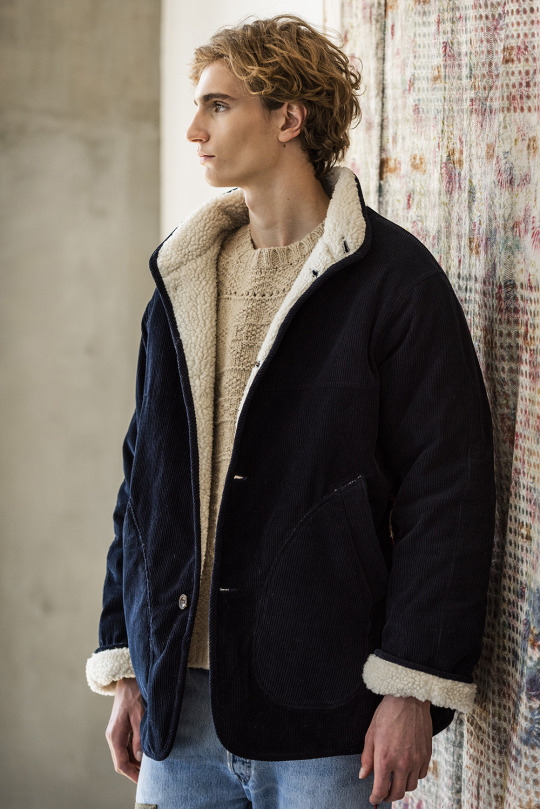
My favorites are the things I feel Ciongoli has always done best – the sturdier outerwear and heavier knits. There’s something the company calls their trekking turtleneck, which is a chunky, navy turtleneck with an almost brace-sized collar. “It’s the only piece in the collection we made in Italy,” says Ciongoli. “It’s a gutsy, but soft merino shaker knit with a substantial, slightly stretched-out, fold-over neck and racking-stitched reinforcements placed where a backpack would hit your shoulders.”
There’s also a sherpa-lined, navy corduroy coat, which features fold back cuffs, a stand-up collar, and some oversized pockets. A colorful rope belt wraps around the back, which you can use to cinch up the waist and give the coat some shape. I imagine it would look great with olive fatigues or, as pictured above, washed denim. The textured sweaters below are made from upcycled cashmere fibers, which are swept up from the factory floor and then re-spun into new and colorful marled yarns.
Interestingly, much of the collection is made from Khadi, which is a handspun, handwoven fabric that once symbolized Indian independence. During the first two decades of the 20th century, Gandhi promoted Khadi as a way for Indians to boycott English fabrics (which were forced into the country by way of policy, and then the profits from those sales went back into the British colonial machine). Khadi, particularly in cotton, is a little slubbier than what you may find elsewhere. I have a indigo-dyed dressing gown in the material and find it wears like regular plain weaves, but has a bit more visual character – it’s similar to what denim enthusiasts might call neppy. 18 East uses it for their woven shirts and jungle jacket, the second of which is accented with a Himalayan tapestry textile that Ciongoli found in the markets of Kathmandu.
18 East departs from Ciongoli’s early work at Eidos, which was about softer, more causal Italian tailoring and sportswear (#menswear, in short). But it was clear that over time, his Eidos collections became more and more casual, at times even exploring the idea of classic on other continents. When I interviewed him a few years ago about how he designs clothes, he noted that classic can mean all sorts of things in other cultures, and often those notions are worth exploring.
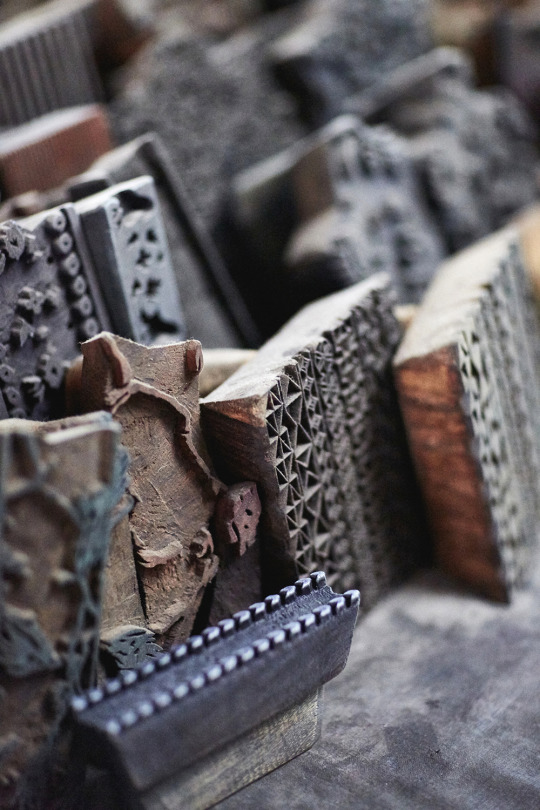
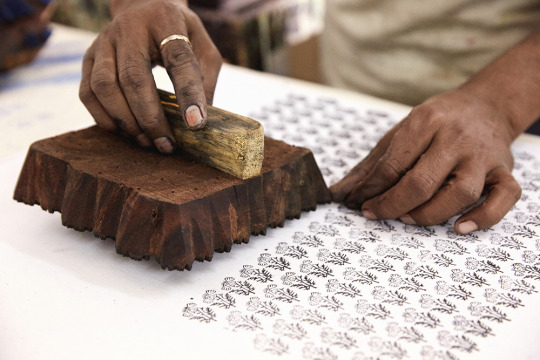
This new line doesn’t have things like Eidos’ Agy pants, which were a play off traditional Indian pajama pants, but they take after centuries-old Indian production methods. The most obvious are the block prints, which start with hand-carved, rosewood block patterns that are dipped into mashed inks and carefully stamped along lengths of wool, linen, and cotton. English silk printers such as David Evans used to do things like this before they closed, but now Western labor is so expensive, the art has all been lost (notably, whereas British printers used to set their patterns with pins, Indian makers do it freehand). When you talk about printing in Western Europe, the choices are usually between silk screening and cheaper digital printing. In India, digital printing isn’t even an option and silk screening is considered a cop out. True artisanal manufacturing is about hand-block printing.
Perhaps best of all is the price. 18 East will be distributed at select stores this season – Magasin, Unionmade, and 180 the Store – but much of the stock will be sold directly to consumers online and through Roller Rabbit’s already-existing network of brick-and-mortars (they have eleven stores in the United States). This direct distribution, coupled with the Indian manufacturing, means the hand-block printed shirts come in at under $100, the wooly fleece vests cost $195, and field jacket done in handmade Khadi is $325. Pricey, but not extravagantly so for the level of labor involved. “The stuff here is cool and different, but it’s not a step out. And it’s not so much of a risk to try something new when things are a bit more affordable. I really want this line to be accessible.”
As for how people will react to non-Western manufacturing, Ciongoli recognizes that he has to work on changing people’s prejudices. “There will be a big focus on taking people with us, visually speaking, and showing them the work that we’re so proud of,” he says. “I spent two weeks in Bagru and Jaipur, where they do mud resist and hand-block printing. The level of craft is just remarkable. Some people in this industry feel like, if they find something good, they have to keep it a secret. I feel strongly about the opposite – I want to show people these amazing makers all over the world because that means they get more business. Each season will be about a new place and we hope to show people the best of artisanal craftsmanship. We hope they fall in love with these manufacturing processes as much as we have.”
Pictured below are some looks from their debut collection, as well as exclusive shots from Ciongoli’s trip to India. Unlike most brands, which follow a seasonal schedule, 18 East plans on delivering a small collection every two months. Each collection will be about a different place in the world and use region-specific textiles. The next two capsules will center on Ireland and Tangier (and there’s reason to believe that an Inis Meain sweater may be in the pipeline). You can keep up with the brand through their website, as well 18 East and Antonio Ciongoli’s Instagram accounts.
